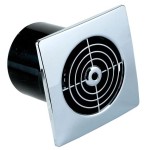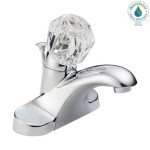Glacier Bay Bathroom Sink Stopper Stuck Closed: Troubleshooting and Solutions
A common household plumbing issue is a bathroom sink stopper that refuses to open. This problem is particularly frustrating when it occurs with Glacier Bay bathroom sink stoppers, often found in many homes due to their affordability and availability at large home improvement retailers. Understanding the mechanics of these stoppers and knowing how to diagnose and address the issue can save time and money on plumbing repairs.
The purpose of a bathroom sink stopper is to retain water within the basin, facilitating tasks such as shaving or washing. Glacier Bay stoppers typically operate via a lift rod mechanism. This mechanism levers a linkage beneath the sink, which in turn raises or lowers the stopper. The stopper itself seals against a drain opening, preventing water from escaping. When this system malfunctions and becomes stuck in the closed position, it can lead to a buildup of water and potential inconveniences.
Several factors can contribute to a stuck closed stopper. Debris accumulation, such as hair, soap scum, and mineral deposits, is a frequent culprit. This buildup can obstruct the stopper's movement or impede the linkage mechanism. Corrosion of the linkage components or the stopper itself can also seize the system. Furthermore, misalignment of the linkage or the stopper due to loosening or displacement of parts can prevent the stopper from functioning correctly.
Identifying the Cause of the Stuck Stopper
The initial step in resolving a stuck Glacier Bay bathroom sink stopper is to identify the underlying cause. This requires a careful examination of the stopper mechanism and the surrounding area. First, visually inspect the stopper within the basin. Look for visible debris, such as hair or soap scum, that may be preventing it from opening. If debris is present, attempt to remove it using tweezers or a small hook.
Next, examine the lift rod and linkage system located beneath the sink. The lift rod is the vertical rod that extends from the faucet to the linkage mechanism. The linkage mechanism typically consists of a clevis, a pivot rod, and a stopper arm, all interconnected to translate the vertical motion of the lift rod into a horizontal motion that raises or lowers the stopper. Look for any signs of corrosion, misalignment, or loose connections within this system.
To further diagnose the problem, manually manipulate each component of the linkage system. Attempt to move the stopper arm directly. If the stopper moves freely when the arm is manipulated, the problem likely lies with the lift rod or the connections between the lift rod and the linkage. If the stopper remains stuck even when the arm is moved directly, the obstruction is probably located within the drain itself, underneath the stopper.
Furthermore, check the pivot rod. The pivot rod connects the clevis to the stopper arm. Over time, this rod can become corroded or loosened, preventing the proper transfer of motion. Ensure the pivot rod is securely fastened and moves freely within its housing.
Addressing Common Issues and Solutions
Once the cause of the stuck stopper is identified, appropriate corrective action can be taken. If debris is the primary culprit, thorough cleaning is essential. For minor debris accumulation, using tweezers or a bent wire to extract the obstructions might suffice. However, for more stubborn buildup, dismantling the stopper mechanism for a more thorough cleaning may be necessary.
Before dismantling, it is crucial to shut off the water supply to the faucet to prevent accidental flooding. Locate the shutoff valves beneath the sink, typically one for hot water and one for cold water. Turn both valves clockwise until they are completely closed.
To dismantle the stopper mechanism, begin by loosening the nut that secures the pivot rod to the stopper arm. Once loosened, the pivot rod can be removed, allowing the stopper arm to be disconnected from the clevis. Gently pull the stopper upward from the drain opening. Be prepared to encounter resistance due to accumulated debris. Use a small, flexible brush or a pipe cleaner to remove any remaining debris from the drain opening.
Clean the stopper thoroughly with a solution of warm water and dish soap. Use a scrub brush to remove any stubborn buildup. Inspect the stopper for signs of corrosion or damage. If the stopper is severely corroded, replacing it may be the most effective solution. Similarly, clean all components of the linkage mechanism with the same solution. Pay particular attention to the pivot rod and its housing, ensuring they are free of debris and corrosion.
After cleaning, reassemble the stopper mechanism in the reverse order of disassembly. Ensure all connections are secure and properly aligned. Apply a small amount of plumber's grease to the pivot rod and other moving parts to lubricate them and prevent future corrosion. Once reassembled, test the stopper's operation by raising and lowering the lift rod. Verify that the stopper moves freely and seals properly against the drain opening.
Tackling More Complex Problems
If simple cleaning and reassembly do not resolve the issue, more complex problems may be present. Corrosion of the linkage components, particularly the clevis or the stopper arm, can impede their movement and prevent the stopper from opening. In such cases, replacement of the corroded parts is often necessary.
Individual replacement parts for Glacier Bay bathroom sink stoppers can sometimes be difficult to find. However, universal replacement kits are typically available at hardware stores and home improvement retailers. These kits include a variety of components that can be used to replace damaged or corroded parts in most standard sink stopper mechanisms.
Misalignment of the linkage system can also contribute to a stuck stopper. Over time, the connections between the lift rod, clevis, and stopper arm can loosen, causing the linkage to become misaligned. This misalignment can prevent the stopper from moving freely. To correct this, carefully adjust the positions of the various components of the linkage system until the stopper moves smoothly and seals properly.
Another potential issue is a blockage deeper within the drainpipe. If the stopper is free of debris and the linkage mechanism is functioning correctly, a blockage further down the drain may be preventing water from draining properly, creating back pressure that hinders the stopper’s movement. In these cases, using a plumbing snake or auger to clear the blockage may be necessary.
Before using a plumbing snake, remove the stopper completely. Carefully insert the snake into the drain opening and rotate it as it moves down the pipe. If you encounter resistance, continue rotating the snake to break up or dislodge the blockage. Once the blockage is cleared, remove the snake and flush the drain with hot water to remove any remaining debris.
In some instances, the drainpipe may need to be disassembled to remove a particularly stubborn blockage. This task requires specialized tools and knowledge and may be best left to a professional plumber. Improper disassembly or reassembly of the drainpipe can lead to leaks and further plumbing problems.
Furthermore, the stopper itself might be damaged. Cracks or deformities in the stopper can prevent it from sealing properly or cause it to bind within the drain opening. In such cases, replacement of the stopper is the only viable solution. Ensure the replacement stopper is compatible with the Glacier Bay sink and drain assembly.
Finally, the threads on the lift rod can become stripped, preventing it from engaging properly with the clevis. This issue will prevent the transfer of motion necessary to operate the stopper. Examine the lift rod for signs of wear or damage. If the threads are stripped, the lift rod will need to be replaced. Universal lift rods are typically available and relatively easy to install.

Reviews For Glacier Bay Universal Install Drain Assembly In Chrome Pg 1 The Home Depot

Have A Question About Glacier Bay Decorative Lavatory Sink Pushon Drain Without Overflow In Chrome Pg 1 The Home Depot

How To Fix Stopper In Bathroom Sink Faucet Quick And Easy

How To Fix A Broken Sink Stopper Replacing The Pivot Rod

Glacier Bay Decorative Lavatory Sink Pushon Drain Without Overflow In Chrome 89461 The Home Depot

Glacier Bay Decorative Lavatory Sink Pushon Drain Without Overflow In Chrome 89461 The Home Depot

How To Re Connect The Lift Rod A Faucet Drain Stopper

Glacier Bay Aragon 4 In Centerset Single Handle Low Arc Bathroom Faucet Polished Chrome Hd67100w 6301

Glacier Bay Decorative Lavatory Sink Pushon Drain Without Overflow In Chrome 89461 The Home Depot
I Ve Twisted Pulled And Jimmied This Sink Drain Stopper But It Won T Come Out The Silver Lid Also How Can Get Without Breaking Quora
Related Posts







